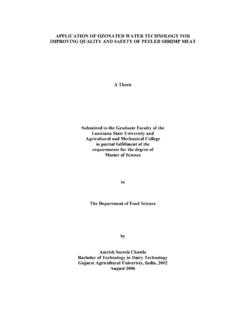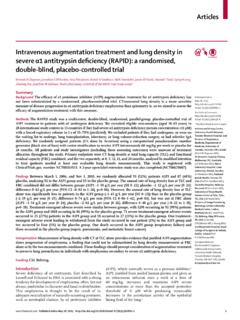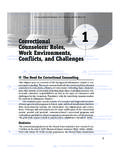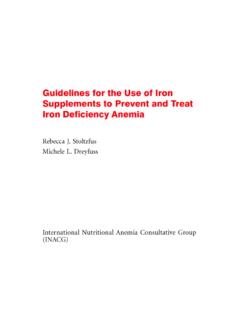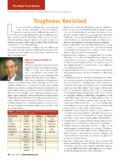Transcription of Advancedtechnologiesinwaterandwastewater treatment
1 247 Advanced technologies in water and wastewatertreatmentH. Zhou and SmithAbstract: The use of conventional water and wastewater treatment processes becomes increasingly challenged withthe identification of more and more contaminants, rapid growth of population and industrial activities, and diminishingavailability of water resources. Three emerging treatment technologies, including membrane filtration, advanced oxidationprocesses (AOPs), and UV irradiation, hold great promise to provide alternatives for better protection of public health andthe environment and thus are reviewed in this paper. The emphasis was placed on their basic principles, main applications,and new developments. Advantages and disadvantages of these technologies are compared to highlight their currentlimitations and future research needs. It can be concluded that, along with the growing knowledge and the advances inmanufacturing industry, the applications of these technologies will be increased at an unprecedented words:water treatment , wastewater treatment , membrane filtration, ozonation, advanced oxidation processes, sum : L utilisation de proc d s conventionnels de traitement de l eau et des eaux us es sont de plus en plus misau d fi avec l identification de plus en plus de contaminants, la croissance rapide de la population et des activit sindustrielles, et la disponibilit d croissante des ressources en eaux.
2 Trois technologies de traitement en voie ded veloppement, incluant la filtration par membrane, les proc d s d oxydation avanc s (POA) et l irradiation par ultraviolet, tiennent la grande promesse de fournir des alternatives pour une meilleure protection de la sant publique et del environnement, et pour cela, elle ont t revues dans cet article. L emphase a t plac e sur leurs principes de base,les applications principales et les nouveaux d veloppements. Les avantages et inconv nients de ces technologies ont t compar s pour mettre en lumi re leur pr sentes limitations et les futurs besoins en recherche. Il peut tre conclu que,conjointement avec les connaissances accrues et les avanc es dans l industrie manufacturi re, les applications de cestechnologies vont s accro tre une chelle sans pr c cl s :traitement de l eau, traitement des eaux us es, filtration par membrane, ozonation, proc d s d oxydationavanc s, irradiation par ultra violet.[Traduit par la R daction]IntroductionConventional water and wastewater treatment processes havebeen long established in removing many chemical and micro-bial contaminants of concern to public health and the environ-ment.
3 However, the effectiveness of these processes has be-come limited over the last two decades because of three newchallenges (Langlais et al. 1991; Mallevialle et al. 1996). First,Received for publication inCan. J. Civ. February accepted 22 August 2000. Published on the NRC ResearchPress Web site on 28 February from Can. J. Civ. Eng. 28(Suppl. 1): 49 66 (2001).Published in J. Environ. Eng. Sci. on the NRC Research PressWeb site on 15 July of Engineering, University of Guelph, Guelph,ON N1G 2W1, Engineering Program, Department ofCivil and Environmental Engineering, University of Alberta, Ed-monton, AB T6G 2G7, discussion of this article is welcomed and will be receivedby the Editor until 30 November knowledge about the consequences from water pollu-tion and the public desire for better quality water have promotedthe implementation of much stricter regulations by expandingthe scope of regulated contaminants and lowering their max-imum contaminant levels (MCLs).
4 In water treatment , amongthe most important developments are the establishment of thepossible link between halogenerated disinfection by-products(DBPs) and cancers, and the recent outbreaks caused byGiar-diacysts andCryptosporidiumoocysts. These have promotedthe United States Environmental Protection Agency (USEPA)to propose the Interim Enhanced Surface Water treatment Rulefor the mandatory destruction of these microbial contaminantsand the Disinfection Disinfection By-Product Rule for lower-ing the MCLs for total trihalomethanes (THMs) and setting newMCLs for haloacetic acids (HAAs). Similarly, the stricter regu-lations have been set over a much broader range of contaminantsfor wastewater discharge. Among them, the most significantare perhaps the new requirements to remove nutrients (nitro-gen and phosphorus) and synthetic organic compounds (SOCs)because of their significant impacts on public health and Environ. Eng. : 247 264 (2002)DOI: 2002 NRC ,2002 The second factor is the diminishing water resources andrapid population growth and industrial development.
5 The reuseof municipal and industrial wastewaters and the recovery ofpotential pollutants used in industrial processes become morecritical. This is especially true in arid or semiarid areas wherethe potable water and irrigation water must be imported at greatexpense. The reclamation may be further justified in view ofgrowing concern over the contamination of water resources bythe release of more toxic compounds. Advanced treatment tech-nologies have been demonstrated to remove various potentiallyharmful compounds that could not be effectively removed byconventional treatment addition, advances in the manufacturing industry and thegrowing market associated with advanced treatment processeshave resulted in substantial improvements to the versatility andcosts of these processes at the industrial scale. Using life-cycleanalysis, for example, Wiesner et al. (1994) concluded thatthe costs of new pressure-driven membrane filtration plantsare expected to be comparable with or even less than thoseusing conventional treatment processes for capacities up to20 000 m3 resolve these new challenges and better use economicalresources, various advanced treatment technologies have beenproposed, tested, and applied to meet both current and antici-pated treatment requirements.
6 Among them, membrane filtra-tion, advanced oxidation processes (AOPs), and UV irradia-tion have been proven to successfully remove a wide range ofchallenging contaminants and hold great promise in water andwastewater treatment . As a result, this paper focuses on examin-ing these three groups of advanced treatment technologies withemphasis on their process fundamentals, main applications, andadvantages and disadvantages. The current limitations and fu-ture research needs associated with these technologies are filtration technologiesMembrane filtration can be broadly defined as a separationprocess that uses semipermeable membrane to divide the feedstream into two portions: a permeate that contains the materialpassing through the membranes, and a retentate consisting of thespecies being left behind (Mallevialle et al. 1996). More specif-ically, membrane filtration can be further classified in terms ofthe size range of permeating species, the mechanisms of rejec-tion, the driving forces employed, the chemical structure andcomposition of membranes, and the geometry of most important types of membrane filtration are pressure-driven processes including microfiltration (MF), ultrafiltration(UF), nanofiltration (NF), and reverse osmosis (RO).
7 Membrane filtration system selection and designThe successful use of membrane processes depends on aproper selection of membrane material. Ideally, a membraneshould have a high permeate flux, high contaminant rejection,great durability, good chemical resistance, and low cost. Thepermeate flux is usually defined as the rate at which perme-ate passes through a unit area of membrane. Extensive researchhas been conducted to develop new membrane materials (Wies-ner and Chellam 1999). Inorganic membranes, although havingvery high chemical and temperature resistance, are now still oflittle commercial use due to brittleness and expense. Organicpolymers remain the most widely used commercial membranematerials. They are usually constructed by coating a thin activepolymeric layer onto a microporous support to provide desir-able mechanic strength while having higher water permeabilityand chemical resistance. The polymers typically used for theactive layer include cellulose acetates, polyamides, polypropy-lene, and polysulfones.
8 More information about the propertiesof the membranes has been reviewed by Mallevialle et al. (1996)and the American Water Works Association (AWWA) Mem-brane Technology Research Committee (1998).From a practical application point of view, one of the mostimportant membrane properties in the selection of a membraneprocess is the pore size or molecular weight cutoff (MWC),which specifies the maximum molecular weight of a solute to berejected. Table 1 summarizes the main characteristics of com-mon membrane filtration processes. MF is permeable to speciesup to 0. 5 m in diameter and is capable of a relatively high fluxunder a small pressure difference across the membrane. Thus, itis often used for separating micrometre particles and microor-ganisms from water. By comparison, RO has the smallest poresize and can virtually retain all the ions while operating undera very high pressure difference and at a relatively low perme-ate flux. It is commonly used for desalting brackish water andseawater.
9 UF and NF have characteristics between those of MFand RO. Recently, these two types of membrane processes havegained considerable interest because they are very effective inremoving natural organic matter (NOM) and trace SOCs whilestill maintaining a high permeate flux. Membrane processes aresuitable for removing a wide range of contaminants in water andwastewater treatment because of the wide range of pore performance of membrane processes also depends onthe use of proper module configurations. A comparison amongdifferent model configurations is presented in Table 2. NF andRO are typically of the spiral wound configuration to promoteturbulence, thereby reducing concentration polarization foulingand particle cake deposition. However, this type of membraneconfiguration is vulnerable to the occurrence of biofouling. Theweakness of seals and glue lines also prevents the use of vigor-ous backwashing and may cause the loss of module contrast, MF and UF usually use hollow fibre geometry tofacilitate backwash and yield a high surface area to volumeratio.
10 A major drawback is the high energy consumption nec-essary to maintain high cross-flow velocity. Recently, manynew design concepts have been introduced by modifying mod-ule configurations to minimize membrane fouling and reduceoperating costs. Winzeler and Belfort (1993) and Mallubhotlaand Belfort (1997) studied the fluid dynamics in membranemodules and proposed a special curved wall configuration that 2002 NRC CanadaZhouandSmith249 Table characteristics of common membrane filtration size ( m)Main mechanismsTypical transmembrane pressure, P(MPa)Permeate fluxReverse osmosis (RO)< + exclusion5 8 LowNanofiltration (NF) + (UF) (MF)> of different membrane woundHollow fibreTubularPlate and frameRotating discPacking density (m2/m3)+++++ + Wall shear rate++++++++++Permeate flux (L/(m2 h))+++++++++++Holdup volume+++ + Cost per area++++++ Replacement cost++++ +++ Energy consumption+++ +++Fouling tendency+++++++++++Ease of cleaning +++++Pretreatment requirement ++++++++Note:The configurations are ranked from clear disadvantage ( ) to clear advantage (+++).

